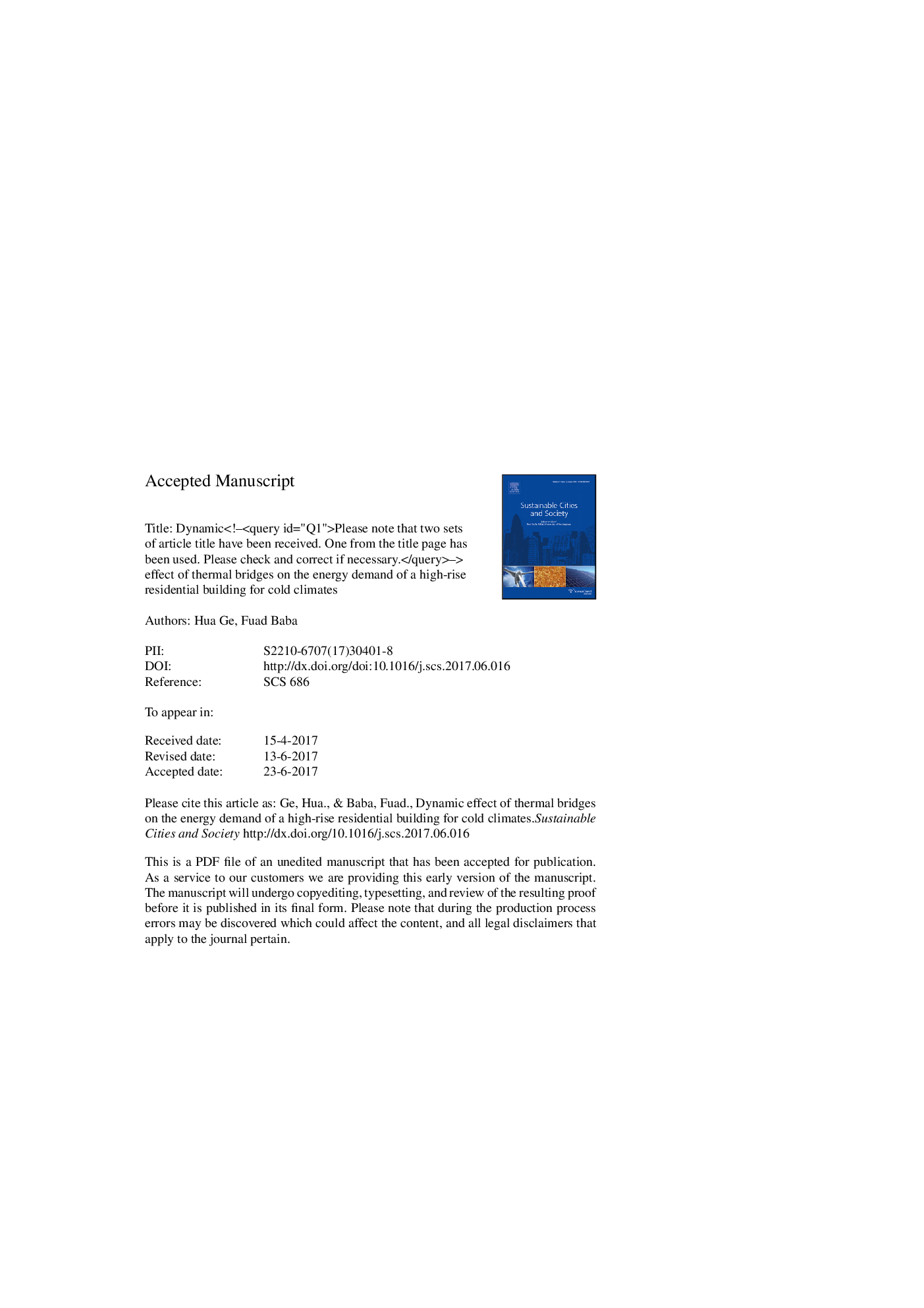| Article ID | Journal | Published Year | Pages | File Type |
|---|---|---|---|---|
| 4928187 | Sustainable Cities and Society | 2017 | 25 Pages |
Abstract
This paper investigates the effect of dynamic modeling of thermal bridges on the energy performance of multi-unit residential buildings with high thermal mass under cold climates of Canada. The simulation results show that the inclusion of thermal bridges increases the annual space heating energy demand by 38-42% and decreases the annual space cooling energy demand by 8-26% for pour-in-place concrete construction for the four cities studied in the province of British Columbia, Canada. The improvement of building envelope connection details significantly reduces the contribution of thermal bridges to 3-4% for the space heating energy demand. Due to the smaller amount of thermal bridges in brick veneer construction, the inclusion of thermal bridges increases the annual space heating energy demand by 24-28%. The dynamic effect of thermal bridges on the energy performance depends on the amount and quality of thermal bridges. Compared to the 3D dynamic modeling approach, the annual space heating energy demand can be underestimated by up to 13% by the equivalent U-value method and up to 10% by the equivalent wall method, respectively. The difference between 3-D dynamic modeling and the equivalent U-value method is reduced to less than 3% when the connection details are improved.
Keywords
Related Topics
Physical Sciences and Engineering
Energy
Renewable Energy, Sustainability and the Environment
Authors
Hua Ge, Fuad Baba,
